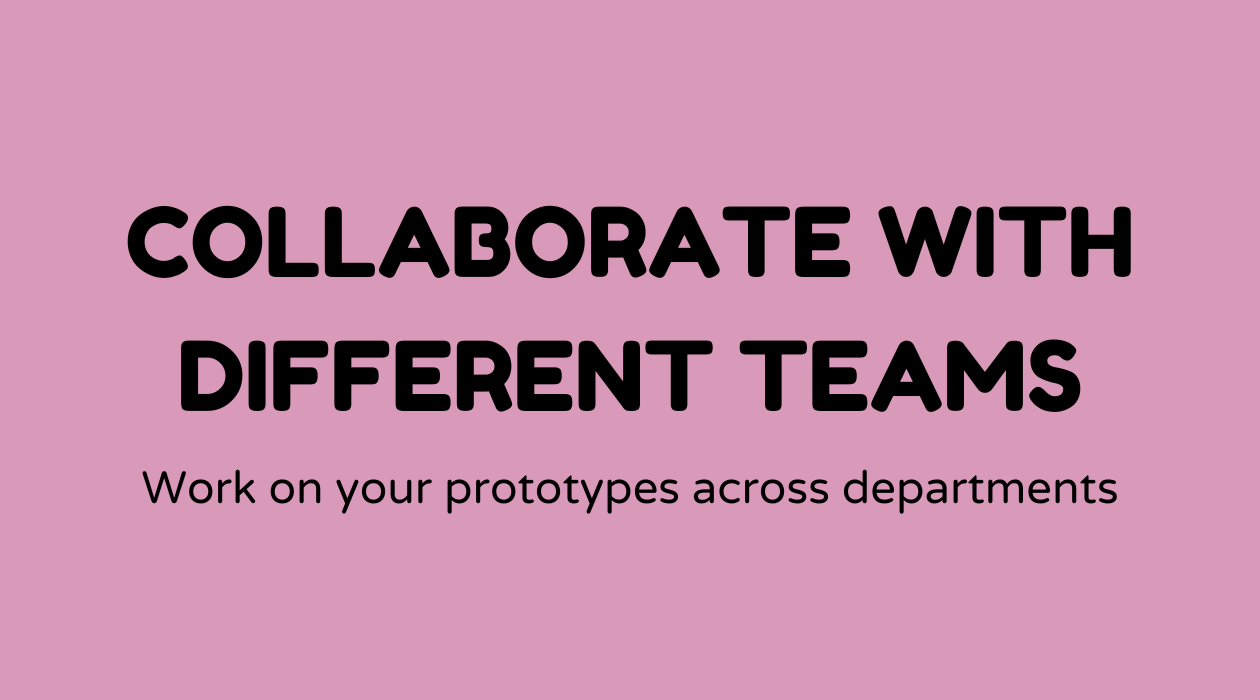Collaborate with design / product / engineering for rapid iteration or feedback

Overview of Collaborating with Design, Product, and Engineering for Quick Iteration or Feedback:
Working in the fast-moving realm of product development often necessitates cooperation among design, product, and engineering teams to swiftly iterate and gather feedback. This goes beyond simply conducting meetings; it involves establishing a workflow and team culture that prioritizes flexibility, effective communication, and joint problem-solving.
Why Collaboration in Product Development is Important:
Cooperation in product development is essential for innovation and efficiency. When design, product, and engineering teams collaborate, they can prevent common issues like miscommunication, delays, or incomplete comprehension of project objectives. Additionally, it promotes diverse viewpoints, which can result in more innovative solutions.
Failure to collaborate effectively might lead to products that do not satisfy user needs or meet deadlines. Employing tools and strategies for constructive collaboration, such as agile methodologies or cross-functional workshops, can boost productivity and product quality.
What Does Collaboration with Design, Product, and Engineering Involve?
Working across these disciplines means coordinating roles and tasks to ensure unified progress toward shared objectives.
- Design teams concentrate on user experience and appearance.
- Product teams align development with business goals.
- Engineering teams convert these goals and designs into tangible products.
This collaboration involves regular meetings, shared documentation tools, and feedback loops to ensure everyone remains aligned.
How to Collaborate Across Teams for Quick Iteration or Feedback:
-
Establish Common Tools and Platforms:
- Implement platforms like Slack, Jira, or Asana for real-time communication and project management.
- Version control tools like GitHub assist in tracking changes and iterations.
-
Set Clear Objectives:
- Define project goals and deliverables from the outset to maintain focus.
- Ensure everyone understands these objectives to prevent disruptions in the process.
-
Adopt Agile Methodologies:
- Utilize daily stand-ups and sprint reviews for continuous feedback.
- Prioritize tasks using Kanban or Scrum Boards to visualize progress.
-
Encourage an Open Feedback Culture:
- Create an environment where all team members feel comfortable providing and receiving feedback.
- Use tools like Figma or Invision for collaborative design work and feedback.
-
Encourage Cross-Functional Teams:
- Include professionals from various roles in each team to introduce diverse perspectives and skills.
Sample Agenda for a Cross-Functional Feedback Session:
-
Introduction:
- Quick recap of objectives and current status.
-
Design Presentation:
- Display the latest design mockups or prototypes.
-
Product Insights:
- Discuss market needs and customer feedback.
-
Engineering Feasibility:
- Address technical constraints and timelines.
-
Open Discussion:
- Invite feedback, identify challenges, and brainstorm solutions.
-
Action Items:
- Define next steps, assign tasks, and set deadlines.
Examples of Successful Collaboration for Quick Iteration:
- Spotify: Known for its 'squads' model, Spotify creates small, cross-functional teams that focus on specific features.
- Airbnb: Continuously iterates on its product through feedback loops within integrated design and engineering teams.
FAQs
- How can cross-team collaboration enhance product development?
- It streamlines communication, leverages varied skills, and boosts problem-solving.
- What is a common challenge in teamwork?
- Misalignment on project goals and priorities often leads to inefficiencies.
- What tools support collaboration?
- Tools like Slack, Jira, Figma, and GitHub are vital for effective teamwork.
- Why is feedback essential in collaboration?
- Feedback ensures that the product meets user needs and identifies issues early.
- How often should teams meet for feedback?
- Regularly, with daily stand-ups and weekly or bi-weekly sprint reviews.
- Can agile methods benefit collaboration?
- Absolutely, agile methods are ideal for promoting a cooperative, iterative development process.



